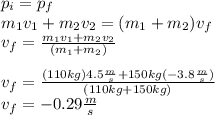

Answers: 3


Another question on Physics

Physics, 21.06.2019 22:00
In a wind tunnel the speed changes as the cross sectional area of the tunnel changes. if the speed in a 6' x 6' square test section is 100 mph, what was the speed upstream of the test section where the tunnel measured 20' x 20'? use conservation of mass and assume incompressible flow. conservation of mass requires that as the flow moves through a path or a duct the product of the density, velocity and cross sectional area must remain constant; i.e., that ova-constant. a model is being tested in a wind tunnel at a speed of 100 mph if the flow in the test section is at sea level standard conditions, what is the pressure at the model's stagnation point? (a) the tunnel speed is being measured by a pitot-static tube connected to a u- tube manometer. what is the reading on that manometer in inches of water? (b) at one point on the model a pressure of 2058 psf is measured. what is the local airspeed at that point?
Answers: 2

Physics, 21.06.2019 22:20
1400 kg car has a speed of 27 m/s. if it takes 7 s to stop the car, what is the impulse and the average force acting on the car?
Answers: 1

Physics, 21.06.2019 22:30
Follow these directions and answer the questions. 1. shine a pencil-thin beam of light on a mirror perpendicular to its surface. (if you don't have a laser light as suggested in the video, you can make a narrow beam from a flashlight by making a cone from black construction paper and taping it over the face of the flashlight.) how does the light reflect? how does the relationship of incident to reflected ray relate to the reflection of water waves moving perpendicular to a barrier? 2. shine a pencil-thin beam of light on a mirror standing on a sheet of paper on the table (or floor) so that you can mark the incident ray and reflected ray. (you can support the mirror from the back by taping it to a wooden block.) 3. mark a line on the paper representing the reflective surface. (the reflective surface of a mirror is usually the back edge.) 4. draw a dashed line perpendicular to the mirror surface at a point where the incident and reflected ray meet. this perpendicular is called a normal to the surface. 5. measure the angles between the rays and the normal. the angle of incidence is the angle formed by the incident ray and the normal to the surface. the angle formed by the reflected ray and normal is called the angle of reflection (r). what is the angle of incidence? what is the angle of reflection? 6. repeat for several different angles. (see report sheet for details.) what appears to be the relationship between the angle of incidence and angle of reflection? in science 1204, what was the relationship for these two angles made by the reflection of waves in a ripple tank? 7. roll a ball bearing so that it hits a fixed, hard surface (a metal plate) at several angles (including head-on). observe the way in which the ball bearing reflects. what generalization can you make about how a ball bearing reflects from a wall? have you proved that light can only behave like a wave?
Answers: 1

Physics, 21.06.2019 23:00
We want to calculate the total metabolic heat generated by a singing canary taking into account heat transfer by radiation, convection and exhaling air. the air temperature is 20 oc, canary’s body internal and surface temperature is 33oc, external body surface convective heat transfer coefficient is 25.2 w/m2 .k, temperature difference between the inhaled and exhaled air is 4.3 oc, the ventilation rate is 0.74 cc of air per second, specific heat of air is 1.0066 kj/kg.k and density of air is 1.16 kg/m3 . assume the canary’s body to be a cylinder with 7 cm diameter and 9 cm length, and heat exchange is from the side as well as the top and bottom of cylinder. calculate 1) the net rate of heat lost by radiation, assuming heat gained by the bird through radiation from the surroundings is 11.5 w; 2) rate of heat transferred by convection to the surrounding air; 3) rate of heat transferred in the exhaling air without considering any internal evaporation; 4) total metabolic power.
Answers: 2
You know the right answer?
A 110 kg quarterback is running the ball downfield at 4.5 m/s in the positive direction when he is t...
Questions

Geography, 28.06.2019 11:30

Mathematics, 28.06.2019 11:30







English, 28.06.2019 11:30

English, 28.06.2019 11:30


Biology, 28.06.2019 11:30

Mathematics, 28.06.2019 11:30



History, 28.06.2019 11:30








